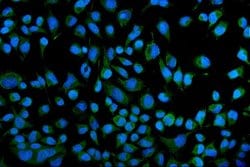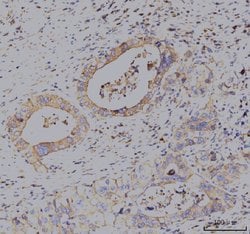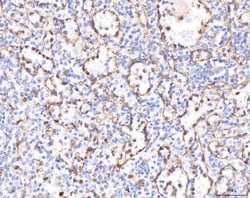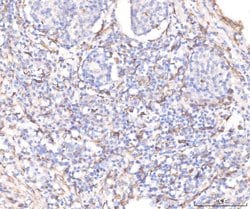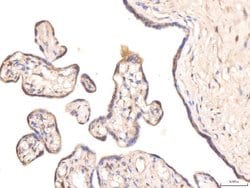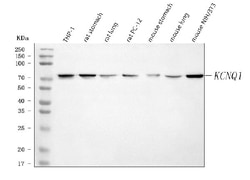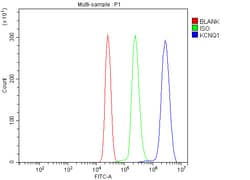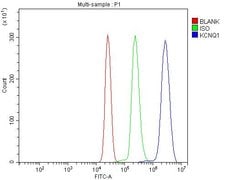Learn More
Invitrogen™ KCNQ1 Polyclonal Antibody
Rabbit Polyclonal Antibody
Supplier: Invitrogen™ PA595399
Description
Reconstitute with 0.2 mL of distilled water to yield a concentration of 500 μg/mL. Positive Control - WB: human THP-1 whole cell, rat stomach tissue, rat lung tissue, rat PC-12 whole cell, mouse stomach tissue, mouse lung tissue, mouse NIH/3T3 whole cell. IHC: human liver cancer tissue, human lung cancer tissue, human placenta tissue, human breast cancer tissue. ICC/IF: Hela cell. Flow: U937 cell. Store at -20°C for one year from date of receipt. After reconstitution, at 4°C for one month. It can also be aliquotted and stored frozen at -20°C for six months. Avoid repeated freeze-thaw cycles.
Voltage-gated K+ channels in the plasma membrane control the repolarization and the frequency of action potentials in neurons, muscles and other excitable cells. A specific K+ channel, comprised of an alpha subunit KCNQ1 and a beta subunit KCNE1, a small protein which spans the membrane only once, is predominantly expressed in the heart and in the cochlea, and is responsible for regulating the slow, depolarization-activated potassium current. Mutations in the genes encoding for KCNQ1 and KCNE1 lead to cardiac disease because they directly impair electrical signaling, and mutations in KCNQ4 are implicated in the onset of deafness. KCNQ proteins, including KCNQ1 and KCNQ4, characteristically contain six transmembrane domains and function as tetramers. KCNQ4 forms heteromeric channels with KCNQ3 and is expressed in several tissues, including the cochlea, where it is present in outer hair cells.
Specifications
| KCNQ1 | |
| Polyclonal | |
| Unconjugated | |
| KCNQ1 | |
| ATFB1; ATFB3; AW559127; FLJ26167; IKs producing slow voltage-gated potassium channel subunit alpha KvLQT1; JLNS1; KCNA8; KCNA9; Kcnq1; kidney and cardiac voltage dependend K+ channel; KQT-like 1; Kv1.9; Kv7.1; KVLQT1; LQT; LQT1; mutant potassium voltage-gated channel KQT-like subfamily member 1; potassium channel, voltage gated KQT-like subfamily Q, member 1; potassium channel, voltage-gated KQT-like subfamily Q, member 1; potassium voltage-gated channel subfamily KQT member 1; potassium voltage-gated channel subfamily Q member 1; potassium voltage-gated channel, KQT-like subfamily, member 1; potassium voltage-gated channel, subfamily Q, member 1; RWS; slow delayed rectifier channel subunit; SQT2; voltage-gated potassium channel subunit Kv7.1; WRS | |
| Rabbit | |
| Affinity Chromatography | |
| RUO | |
| 16535, 3784, 84020 | |
| -20°C | |
| Lyophilized |
| Flow Cytometry, Immunohistochemistry (Paraffin), Western Blot, Immunocytochemistry | |
| 500 μg/mL | |
| PBS with 4mg trehalose and no preservative | |
| P51787, P97414, Q9Z0N7 | |
| KCNQ1 | |
| A synthetic peptide corresponding to a sequence in the middle region of human KCNQ1 (356-397aa QQKQRQKHFNRQIPAAASLIQTAWRCYAAENPDSSTWKIYIR). | |
| 100 μg | |
| Primary | |
| Human, Mouse, Rat | |
| Antibody | |
| IgG |
Safety and Handling
Your input is important to us. Please complete this form to provide feedback related to the content on this product.
